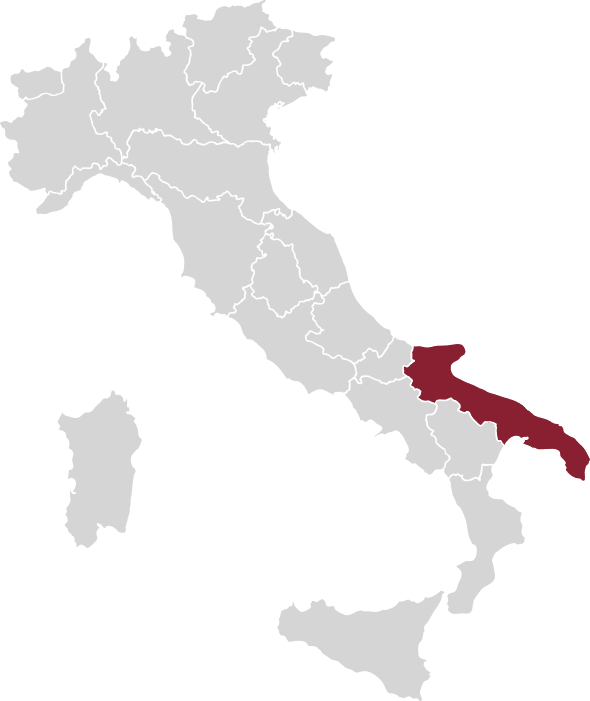Ca’ Vittoria
The Bronze Age sees as protagonist, the city of Canne della Battaglia, memorable scenario of the battle between Carthaginians and Romans. Treasure preserved by the city are the ruins of a domus (house) of particular importance not only historical, but also artistic for the beauty of the paintings on the walls and the precious mosaics of the floors.
In this scenario comes the idea of an Appassimento Puglia that sees the grapes left in situ on the vines to wither for a fortnight, before harvesting and vinification. The name Cà recalls the ruins of the domus (Roman house) while the word Vittoria recalls the battle between the two communities that ended with the victory of the Carthaginians. Even the gold squiggle on the label wants to recall the precious mosaics of the floors.
Appassimento Rosso Puglia IGT
- GRAPES: Red Grapes
- APPELLATION PUGLIA IGT, VINO PASSITO
- PRODUCTION AREA: Apulia
- CLIMATE: The climate is warm and temperate, with abundant rainfall throughout the year. In summer, the African winds cause a rapid and marked rise in temperatures with significant temperature fluctuations.
- HARVEST: Beginning of October
- STORAGE TIME: 4 years
- BOTTLE SIZE: 750 ml
- SERVING. TEMP.: 18/20 °C
- ALCOHOL CONTENT: 14,5% Vol
 Deep red colour
Deep red colour
 The good late maturation gives the characteristic notes of ripe and dried fruits, such as plums and raisins
The good late maturation gives the characteristic notes of ripe and dried fruits, such as plums and raisins
 The subsequent slight oak aging gives the pleasant notes of chocolate and spices that make this wine harmonic and balanced, pleasant and mature
The subsequent slight oak aging gives the pleasant notes of chocolate and spices that make this wine harmonic and balanced, pleasant and mature
 Great wine for roasted meats and with game dishes such as wild boar and deer. Excellent with mature and savory hard cheeses, it is also a good meditation wine
Great wine for roasted meats and with game dishes such as wild boar and deer. Excellent with mature and savory hard cheeses, it is also a good meditation wine

VINIFICATION:
In the last ten days of September the perfect ripeness of the grapes is reached and winemaking process starts from the vine. The withering process takes place in the vineyard by cutting the petiole of grapes but leaving them on the vine for about 15-20 days, during this period 50% of their weight evaporate. This will allow for wines with typical notes of ripe fruits, such as plums and raisins. The hand-picked grapes are pressed and the fermented. The skins are left in contact with the must for a long period to extract flavours and the characteristic red colour. Subsequently the wine is left to complete the malolactic fermentation; this contributes to the peculliar complexity of this wine.
Ca’ Vittoria

